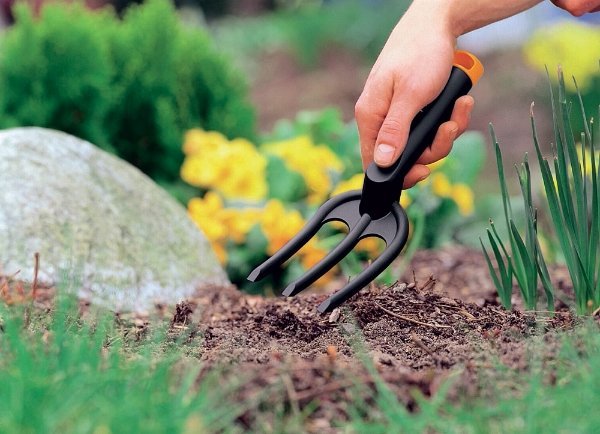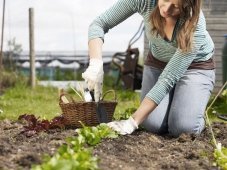Garden work in June
June is the first month of summer, the month with the longest light day. In early June, still flowering raspberry, viburnum, cowberry, dog rose. Fruit trees fade, ovaries increase in size.
It must be remembered that until June 10, there is a danger of frosts. Therefore, you need to monitor the temperature for timely action.
June is a month of rapid growth of fruit and berry crops and flower-ornamental plants. At this time, the fruit of the next year begins to be laid in fruit trees: fruit buds. All your works in the garden at this time should be aimed at creating the most favorable conditions for the normal growth and development of fruits and berries, shoots. It is necessary to protect them from all sorts of diseases and pests. For this purpose regular loosening of soil, removal of weeds around bushes is carried out.

Weeding must be removed before flowering so that their insemination does not occur. Root and chunks are removed as they appear.
Appeared "mustache" on the site of strawberries are removed. Leave only those that you think you need to leave to get the seedlings.
As soon as the first ovaries appear on the bushes of strawberries, it is necessary to spread the straw cutting under the fruit-bearing bushes. You can have willow twigs, pieces of cardboard, boards, etc. This is done in order to protect berries from decay and pollution. You can raise the peduncles with laces on the stand. In the event that the rains are not enough and the land is dry, strawberry must be watered.
On the stems of fruiting pears and apple trees in early June are superimposed belts. This is done to catch moth and caterpillars.
All fruit and berry crops in June need water and nutrients. Therefore, top dressing and regular watering immediately after flowering will be very welcome. Water should be abundant, so that the soil is soaked to a depth of at least 50 cm. For feeding use slurry, poultry litter, mullein, ammonium nitrate, urea. Top dressing, as a rule, is combined with watering.

In early June, the flight of butterflies begins and the egg-laying of the apple moth. The flight of butterflies lasts from 20 to 30 days. At this time each gardener should set as his goal the destruction of as many butterflies as possible of the apple moth. The main thing is not to give her eggs. Butterflies are discouraged by various odoriferous substances, light traps are installed, attracted with fermenting apple juice and destroyed.
After flowering of the apple tree (after 12-15 days), sprinkle with a solution of chlorophos. As a rule, this is done at the signal of forecasts about the beginning of hatching of caterpillar tracks. Spraying is carried out not only from the apple moth, but also from other leaf-eating pests.
In the second half of June, manual harvesting of damaged berries is carried out together with caterpillars in them from the bushes of gooseberries and currants. Destruction of caterpillars is carried out in boiling water. Such a collection should be carried out 2-3 times, as soon as you see the appearance of the first signs of damage, which are manifested in the reddening and decay of the tops of berries.
In 2 weeks after the previous one, repeated spraying of fruit bearing apple-trees from leaf-eating pests and caterpillars of the moth flies. Such spraying can be carried out by Entobacterin-3 (500 g of the preparation per 10 l / in).
Spraying with a solution of carbofos (30 g per 10 l / in) or trichlorometaphos-3 (15-20 g per 10 l / w) is carried out for the destruction of aphids, coffin, larvae of the sawfly of younger age and openly living caterpillars.
Fight with caterpillars caterpillars and other leaf-eating pests can also be done with the help of folk remedies: decoctions of wormwood, red capsicum, tomato tops, onion husks, mustard, squeezes from horseradish roots.






